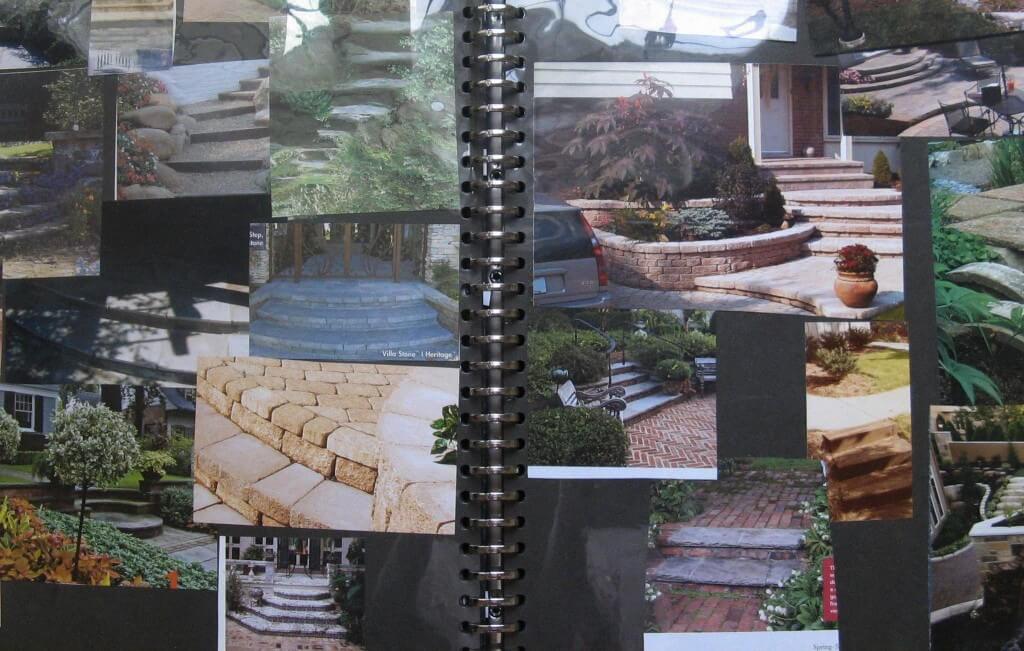Steps can get you from one level to the next quickly and safely, and can certainly be an interesting decorative element in the landscape. Steps can vary in steepness, change direction by curving or angling. Steps can be built with an assortment of materials and material combinations depending on the look you want, and your budget.
Tread & Riser
The horizontal part of the step where you plant your foot, called the tread; and the vertical part of the step, referred to as the riser, need to have a comfortable ratio. The general rule of thumb is twice the riser height in inches plus the length of the tread should equal about 26”.
Steps can be designed to be relaxing (shorter risers and longer treads) or just the opposite when you need to elevate up a slope faster. In most case you are locked into a certain ratio because of a fixed distance and height between the upper and lower levels of where steps begin and end. You have to do a little math to maintain a consistent height to the riser to prevent people from tripping or tumbling down steps.
Width
The width of your steps and walkways will be determined by the number of people that might be walking side by side and more importantly are the steps in scale with the surrounding elements.
Angle
Steps are easier to access when they are approached at right angles to the direction of movement.
Landings
Building a landing into a flight of steps is appealing, facilitates changing direction, slow down the rate of ascent and are nice for a rest when users have to climb a long hill.
Slope
A slight slope to each step from back to front helps to prevent water from collecting.
Flaring
Consider flaring the steps out as they approach and connect to a larger space or pathway.
Retaining Wall Steps
When steps are built into a retaining wall consider where the first steps starts relative to the front of the wall. Will they be built completely into the wall or extend out into the space below the wall.
Edging
Along the sides of steps consider different edging material to prevent soil from spilling on to the treads.
Plants & Grasses
Consider using plants that weep such as liriope or ornamental grasses to form the edges of your steps or even small boulders, 4”-8”river jacks, or a combination of stone and plants to create a more natural look.
Handrails
Consider handrails; handrails should be 3’ above the step levels.
Traffic Volume
The material you select for your steps and walkways should be a reflection of the amount of traffic and its surroundings elements.
